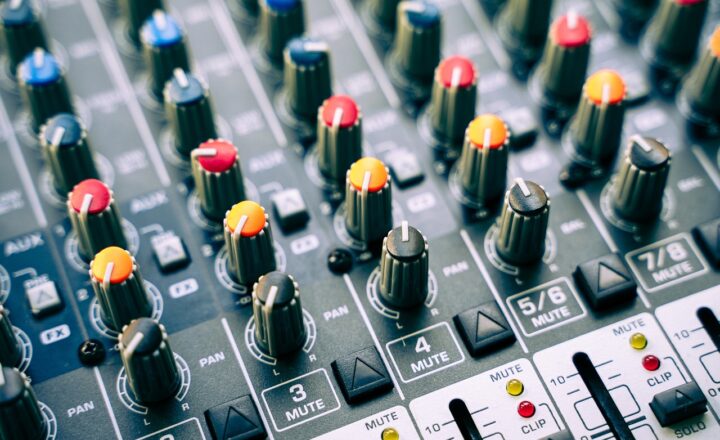Understanding Hi-Fi Systems: What to Look for When Upgrading Your Sound Setup
November 13, 2024

The world of audio equipment can be bewildering, especially for new enthusiasts eager to elevate their listening experience. With countless brands, models, and specifications, navigating the realm of Hi-Fi systems can feel overwhelming. However, upgrading your sound setup should be an enjoyable journey rather than a daunting task. Whether you’re a music lover, movie aficionado, or podcast enthusiast, understanding Hi-Fi systems is key to making informed decisions.
1. What is a Hi-Fi System?
Hi-Fi, short for High Fidelity, refers to equipment that accurately reproduces sound, striving for the highest quality possible. Unlike standard audio systems, which may prioritize volume over clarity, Hi-Fi systems aim to deliver a rich, immersive listening experience that is true to the original recording.
High Fidelity systems typically comprise several key components:
- Source Components: This includes devices that produce audio signals—such as CD players, turntables, or DACs (Digital-to-Analog Converters) that play digital music files.
- Amplifiers: Amplifiers increase the audio signal’s power while maintaining the integrity of the sound. They are crucial for driving speakers effectively without distortion.
- Speakers: This is where the magic happens. High-quality speakers are vital for accurately reproducing audio across various frequencies.
By carefully selecting each component, you can create a sound system tailored to your preferences and listening habits.
2. Key Components of a Hi-Fi System: What to Consider
When upgrading your sound setup, understanding the various components is essential. Here’s a breakdown of what to consider:
Source Components
Choosing the right source component can significantly impact your overall sound quality:
- Turntables: If you’re into vinyl, consider features such as build quality, cartridge type, and tracking ability. A good turntable can bring out the warmth of analog sound.
- Digital Audio Players: Opt for players that support high-resolution audio formats. You want devices that accurately decode and playback these files for optimal sound quality.
- Streaming Devices: If you prefer access to digital libraries like Spotify or Tidal, choose units with high-quality DACs and stable streaming capabilities.
Amplifiers
There are various types of amplifiers to consider:
- Integrated Amplifiers: Combining a preamplifier and power amplifier, these are perfect for most setups, providing a balance between quality and cost.
- Preamplifiers and Power Amplifiers: For audiophiles, separating these components can yield better sound quality and customization options.
- Tube vs. Solid-State: Tube amplifiers often produce warmer sound while solid-state designs can deliver cleaner and more powerful output. Your personal preference should guide this choice.
Speakers
Speakers dictate the sound more than any other component:
- Types of Speakers: Floor-standing, bookshelf, and subwoofers all have different roles in achieving the right sound. Choose based on your room size and listening preferences.
- Sensitivity Ratings: Measured in dB, higher sensitivity means the speaker can produce more sound from a given amount of power. This is a crucial factor in choosing paired amplifiers.
- Frequency Response: Ensure the speakers can reproduce the full spectrum of sound, typically from around 20Hz to 20kHz, for a well-rounded output.
3. Room Acoustics: Don’t Underestimate the Space
Your listening environment plays a significant role in sound quality. Here are key principles to keep in mind:
- Room Size and Shape: Consider how large your room is and its layout. Larger spaces may require more powerful speakers or amplifiers to deliver the desired sound experience.
- Acoustic Treatment: Basic treatments—like rugs, curtains, and bookshelves—can help reduce echoes and absorption, improving clarity and overall sound definition.
- Speaker Placement: The positioning of both the speakers and your listening seat can drastically change the sound. Experimenting with placement can yield a more balanced and immersive audio experience.
4. Additional Audio Components to Enhance Your Setup
To further optimize your listening experience, you may consider adding these components:
- Subwoofers: For movie enthusiasts or bass lovers, a subwoofer adds depth and power to your audio experience, ensuring you feel the sound as much as you hear it.
- Speaker Cables and Interconnects: Quality cables can reduce unnecessary signal loss and improve overall audio performance, making this an often-overlooked but critical area of investment.
- Room Equalizers: Digital room correction software can compensate for undesirable room acoustics, enhancing the clarity and accuracy of audio playback.
Investing in these components can significantly enhance your audio system’s performance and responsiveness.
5. The Importance of Good Listening Habits
Once you’ve upgraded your Hi-Fi system, it’s essential to cultivate good listening habits:
- Quality Music Sources: Ensure you’re using high-quality audio files. Lossless formats retain more detail than standard MP3s, providing a richer listening experience.
- Focus on Your Listening Environment: Reduce background noise, position yourself properly, and minimize distractions to fully immerse yourself in the music or film content.
- Experimentation: Don’t be afraid to play around with different settings, placements, and even music genres. This exploration can lead to a deeper appreciation for your Hi-Fi system’s capabilities.
Cultivating these habits can enhance the benefits of your upgraded sound setup, allowing you to experience music as it was intended.
Conclusion
Upgrading to a Hi-Fi system opens a world of audio possibilities. By understanding each component, the importance of room acoustics, and how to enhance your listening habits, you can create a sound setup that transforms the way you enjoy music and sound. Take your time, make informed decisions, and most importantly, enjoy the journey as you build your ultimate sound experience. Start now, and soon, you’ll be enveloped in high-quality sound that resonates with you on a deeper level.







